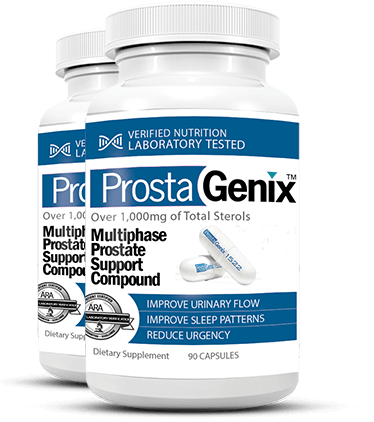Fasting. The word conjures up medical practice (“You have to fast from midnight onward”), religious penitence, and weight loss. It means limiting or abstaining from food for a specified period of time.
I am not writing about fasting for weight loss. Instead, I want to present some information about intermittent fasting, a type of fast that is getting attention for its overall health benefits.
Intermittent fasting, aka time-restricted feeding or intermittent energy restriction, is a practice in which you alternate times when you eat normally with extended time periods (often 14 to 36 hours or longer) when you consume little or no food. Our prehistoric hunter-gatherer ancestors ate when food was available, and fasted intermittently when resources were scarce. Their bodies efficiently used nutrients and stored fat to tide them over. That pattern changed when crop cultivation and food storage methods were developed, but our species had hundreds of thousands of years to become hardwired to survive healthily in lean times. Similar to hibernating species, we still have efficient ways to convert internal resources to energy, using stored fat without sacrificing lean protein.
While there is evidence suggesting that fasting, under certain conditions, may be good for a person’s overall health, there is inconclusive evidence suggesting that this practice can help shrink prostates or resolve urinary problems. Some studies do suggest that having a lower fasting blood glucose (sugar) level may be related to having a smaller prostate. But to date there are no scientific studies suggesting a cause and effect relationship between fasting and prostate size.
WHAT THE BODY DOES WHEN THERE’S NO FOOD COMING IN
When we consume a Western diet, typically high in processed foods, our bodies get plenty of sugars and starches to convert to glucose. Glucose is what the body then metabolizes (processes) for energy. This constant supply of “easy energy” is not good for us because it throws off our metabolic balance. At worst, we develop chronically elevated blood sugar, insulin resistance, and inflammatory agents. This has led to “…an epidemic of conditions characterized by metabolic disturbances, such as obesity, metabolic syndrome (MS), and diabetes mellitus type 2.”[i] In addition, low levels of chronic inflammation set up precursor conditions for many types of cancer, including prostate cancer.
CAN FASTING CORRECT THE IMBALANCE?
Intermittent fasting is growing in popularity. A leader in the health benefits of fasting is the USC Longevity Institute under the direction of Dr. Valter Longo. This group conducted a clinical study using a monthly 5-day intermittent fast (eating a small amount of specific foods for 5 days each month). One of the study participants, Peter Bowes, is a writer for BBC News (Los Angeles). He detailed his personal experience in an article, “Intermittent Fasting: The Good Things it did to My Body,” (Jan. 2014).
Bowes reports that eating very little for five days left him feeling more alert, but hungry and often tired. During the fasting days, he lost several pounds and his blood pressure dropped 10%. These effects did not last, however, and before the next round of fasting he regained almost all the weight and his blood pressure returned to its previous state. However, some effects endured. In his words, “…the most interesting changes were in the levels of a growth hormone known as IGF-1 (insulin-like growth factor). High levels of IGF-1, which is a protein produced by the liver, are believed significantly to increase the risks of colorectal, breast and prostate cancer. Low levels of IGF-1 reduce those risks.”
This change lasted. Dr. Longo told Bowes, “You had a dramatic drop in IGF-1, close to 60% and then once you re-fed it went up, but was still down 20%.” Furthermore, an important inhibitor called IGFBP-1, was measured at significantly higher blood levels during the fast and stayed elevated during normal eating. (This inhibitor helps keep IGF-1 levels low.) His blood work also showed a significant rise in a type of cell that is similar to stem cells, linked with regeneration of tissues and organs. Says Bowes, “It is, according to Longo, a sign that my body switched into a mode that was much more conducive to healthy ageing.”
Other studies suggest that as the body turns its own resources into energy, a process called “autophagy” is switched on. Autophagy is a cellular clean-up operation in which damaged proteins, junk DNA and potentially carcinogenic elements of cells are destroyed and excreted. Research points to the potential role of autophagy in preventing cancer or inhibiting tumor growth if cancer begins. During normal daily eating, autophagy is switched off. Longo’s group is exploring whether 5-day fasts as intermittently as every 60 days would be enough to sustain positive changes like lower IGF-1 and autophagy.
TYPES OF INTERMITTENT FASTING
- The 16/8 Method – create a daily 8-10 hour “eating window” in which you can fit 2, 3 or more meals. Eat healthy foods during the window. During the fast, drink water, coffee, tea or other non-caloric beverages.
- The 5:2 Diet – fast for 2 days per week, restricted to 500-600 calories. Eat normally the other 5 days.
- Eat-Stop-Eat – Choose one or two days per week to conduct a 24 hour fast with nothing but water or other non-caloric beverages.
- Alternate-day Fasting – Conduct a fast every other day by eating nothing or just a few hundred calories (water and other non-caloric beverages permitted.
- The Warrior Diet – Fast during the day (small amounts of raw fruit/veggies okay) and eat a large meal at night within a regular 4-hour window. Paleo or keto diet suggested for the meal.
- Spontaneous Meal Skipping – Skip meals when convenient. Eat healthy meals when you do eat.
You may want to do your own research since research results vary widely, and some evidence is contradictory. If you are interested in any kind of fast, discuss this with your doctor to make sure your health permits fasting.












